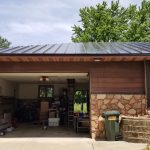By Akshat Rathi for Quartz Media
It’s a rare feat when a government successfully turns a crisis into an opportunity.
In the past two years, the state of South Australia has suffered many blackouts, blamed on high demand and poor supply from both fossil-fuel and renewable generators. In response, the government switched on the world’s largest lithium-ion battery in December, and now it is launching a program to install solar panels on homes and distribute Tesla batteries to create the world’s largest “virtual power plant.”
Here’s how it works: Starting now, about 1,000 homes in public housing will receive Tesla batteries connected to solar panels installed on rooftops. The government will own the equipment, and residents will pay for the usage as they did before. Those who don’t consume all the energy produced by their solar panels can feed it back to the grid, and those who consume more can take extra from the grid.
At this scale, the program is not unusual. Many similar programs around the world benefit from some form of subsidies, helping users cut their energy bills and reduce their carbon footprint at the same time.
Where South Australia’s program differs is that, after the initial rollout, the state will open up the program to 50,000 homes in the state. In this phase, homeowners can either buy the equipment or lease it from an investor. In both cases, the solar panels and batteries will be connected to the grid.





